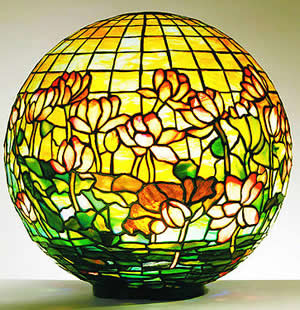by H. McKean), the entire White House was redecorated by Louis Tiffany during Chester Arthur's presidency. Theodore Roosevelt became President of the United States in 1901 when William McKinley died after being assassinated by the anarchist Leon Czolgosz. Roosevelt did not like Tiffany, or his art, considering both to be decadent. Theodore Roosevelt thought putting up stuffed heads of big game animals he killed was decoration enough. He ordered all the Tiffany art objects, which were mostly glass, to be removed and smashed. He refused Tiffany's offer to buy them back. My guess is if he had just put them in storage, we could auction that stuff off for roughly $500 million today, to help pay down the national debt.

There are many instances in history when art has been destroyed for political reasons. Art has often been destroyed when a new religion took over. The early (and later) Christians destroyed a lot of fine statuary because it depicted pagan gods. Just as war should not be excused because there has been a lot of war, Roosevelt's wanton destruction of the art owned by our government should not be excused. But his behavior is not surprising considering the general destructiveness of the man. Most notably, more than any other single person Theodore Roosevelt was responsible for genocide against the people of the Philippines [See The U.S. Conquest of the Philippines].
Why then, is Roosevelt always pawned off as a progressive politician and even an environmentalist? American history-as-propaganda paints a pretty face on Roosevelt's actions during his lifetime, mainly by highlighting a few good features and masking a lot of details. Unlike today, in 1900 large numbers of Americans looked to social cooperation and ethical values to create a better American society. People were demanding economic reforms, women's rights, civil rights, the right to unionize, and the right to use the government to regulate and punish criminal business activities. Many were socialists of one form or another.
Theodore Roosevelt got a name for himself as a reformer early in his life because he took on certain corrupt politicians in New York State. But he had no problem with corrupt practices when he or his friends stood to benefit. While President he did little for the American people. In 1903 he grabbed the Panama Canal zone, but that was because he loved to use the U.S. Navy to bully other nations. Oh, his rhetoric was a fine thing; he called his class of people the "predatory rich," but his reforms were designed to keep particular sets of capitalists, like the railroad corporations, from strangling capitalists as a whole. Trusts (colluding corporate organizations creating monopolies) were attacked rhetorically, but little was actually done about their practices. "The harsh truth is that more trusts were formed under Roosevelt than under the combined administrations of his predecessor (McKinley) and his successor (Taft)." [Bailey, American Pageant]
Roosevelt did increase the size of the national park and forest system, but that was because he like to blast wild animals with guns.
Roosevelt reigned during the age of Reform, but very little reform got done. To distinguish a group of reforms (including women's suffrage and Prohibition) from the more radical socialists and anarchists, the term Progressive came into use. Most of the Progressive politicians were Republicans, notably Fighting Bob La Follette, who became governor of Wisconsin in 1901 and Hiram Johnson, elected governor of California in 1911.
Theodore Roosevelt missed the power of the Presidency after he retired in 1908. President Taft was quieter but more effective, bringing 90 legal proceedings against trusts during his term. But there was no political room to the right of Taft without becoming a Democrat, so Roosevelt tried to get the Republican Party nomination in 1912 by feinting left. When he failed that he formed his own party, which he called the Progressive Party. In effect the Republican Party was split, and the arch-racist Democratic Party nominee, Woodrow Wilson, won with a plurality of the vote. Roosevelt came in second.
Thus the name Theodore Roosevelt became closely associated with the Progressive Party and the progressive movement. So we need to forget the genocide against the Filipino people, and the smashing of Tiffany's glass art, and the unending suffering of American workers and farmers (and African-Americans, and women, and ...) during his era.

No comments:
Post a Comment